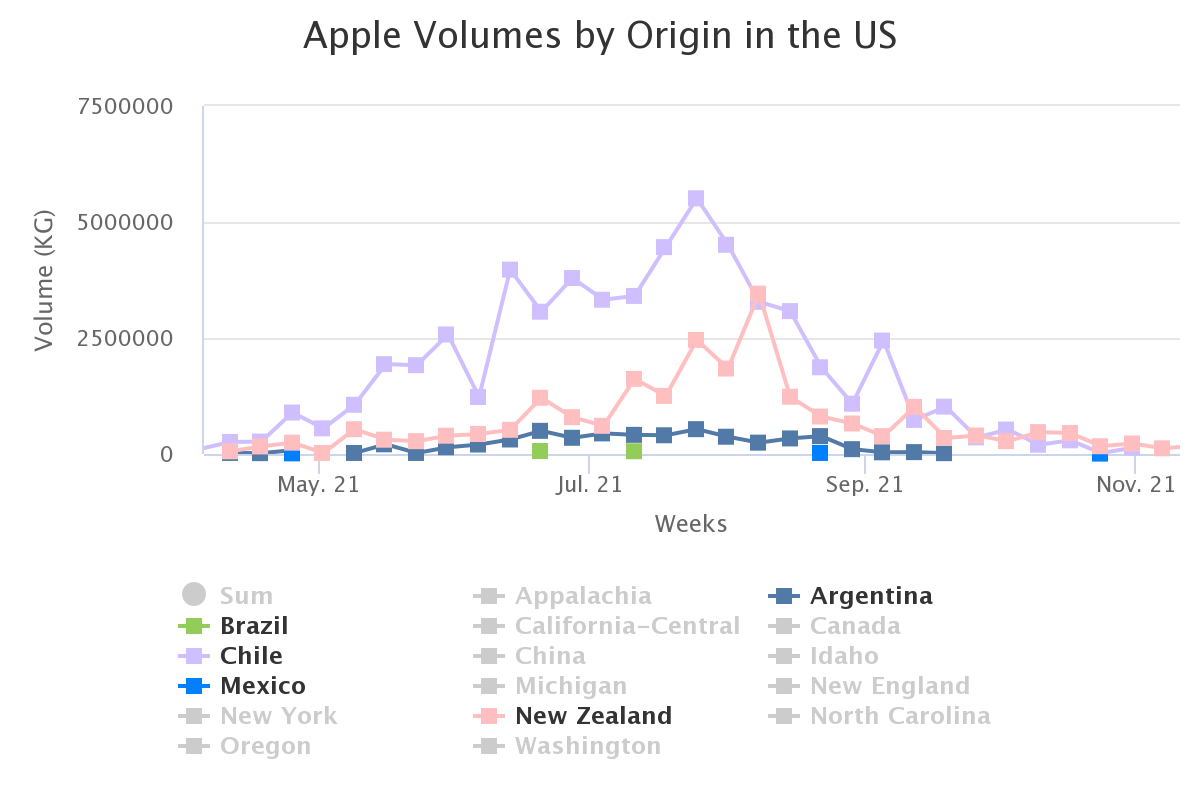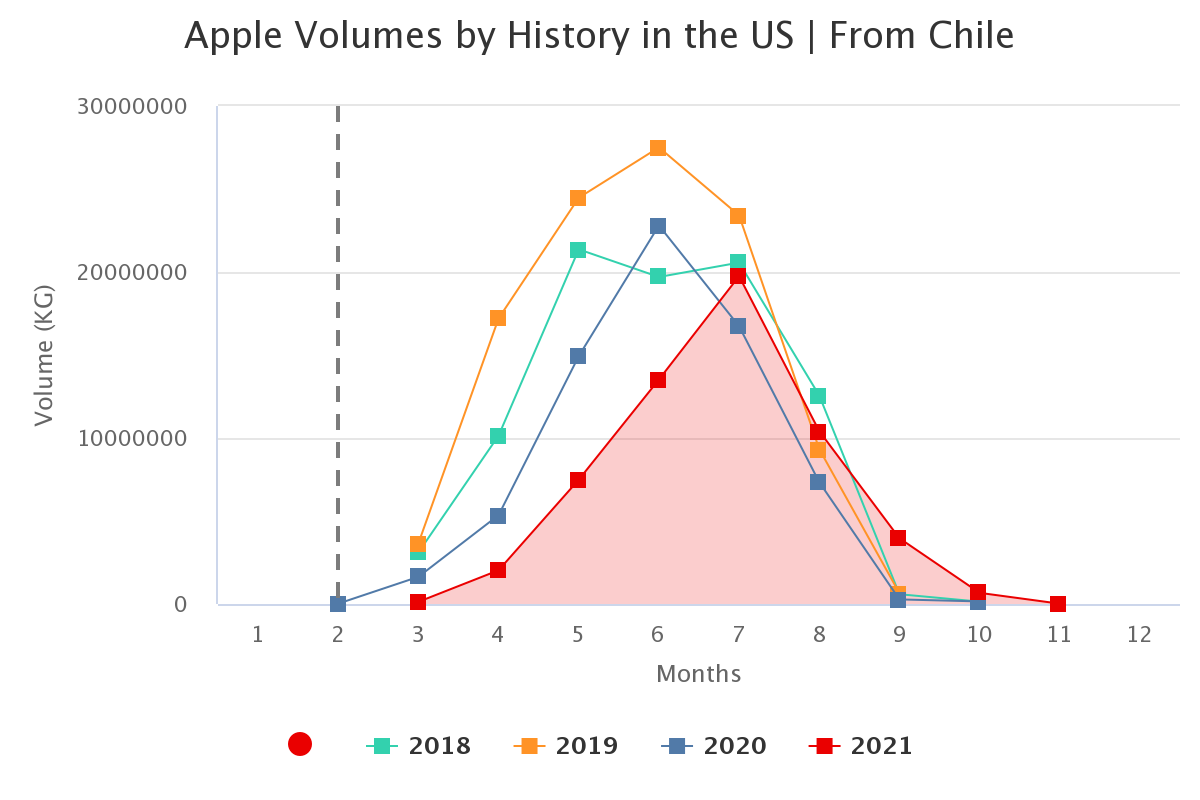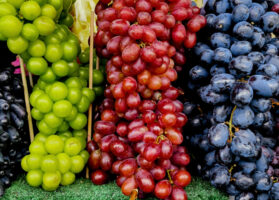Apple imports from southern hemisphere expected to offer relief
Overview of apple imports from southern hemisphere in the U.S. market, complemented by charts from Agronometrics. Original published on March 16, 2022.
This year’s domestic apple crop experienced a challenging growing season including early frost, summer drought and excessive heat during harvest, putting a strain on both quality and total production. Domestic supply issues combined with unprecedented freight challenges have resulted in spiking prices for nearly all produce commodities. The Southern Hemisphere apple and pear crop will offer retailers relief in their supply chain. Honeybear, an importer of apples from the Southern Hemisphere, has key varieties arriving on both coasts, providing retailers with promotable volumes.

Source: USDA Market News via Agronometrics.
(Agronometrics users can view this chart with live updates here)
Honeycrisp’s availability has been significantly affected by lower production this year. The Honeybear import crop will provide summer supply assurance and allow retailers to drive category sales with strong promotable volumes of Honeycrisp along with other key apple and pear category varieties. The Honeycrisp import crop will be available late April, while other conventional and organic varieties of apples and pears are already arriving at U.S. ports.
“We invested heavily in our dual-hemisphere supply chain program more than two decades ago and it is a real point of differentiation for our retail partners,” says Don Roper, vice-president sales and marketing. “With our Chilean growing partner Frusan, we have, in our opinion, the largest and best Honeycrisp production in the Southern Hemisphere. Honeybear provides large scale year-round supply of both conventional and organic Honeycrisp with the same quality retailers have come to expect.”
“By using our production and distribution facilities on both coasts, we partner with retailers to deliver lower landed cost programs to help drive top line sales. Our import supply will be 40 percent higher by volume this year and we will import apples on both coasts allowing for more supply chain flexibility,” says Roper.
The exceptional growing conditions in Chile with the right balance of warm days, cooler nights and perfect rainfall are key to flavorful apples. This year, Honeybear’s signature apple, Pazazz, will be refreshing supply from the Southern Hemisphere in June. The import program will continue to grow along with consumer demand of the apple with a consistently fresh experience consumers depend on.

Source: USDA Market News via Agronometrics.
(Agronometrics users can view this chart with live updates here)
The News in Charts is a collection of stories from the industry complemented by charts from Agronometrics to help better tell their story.
Access the original article with this (Link)






